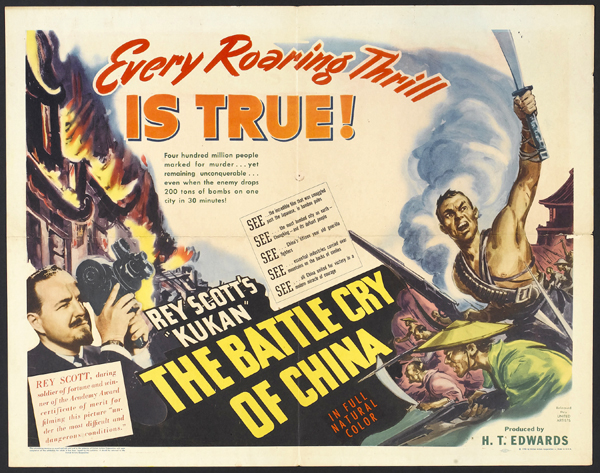About the 1941 Oscar-Winning Documentary KUKAN
In 1937 Li Ling-Ai, a Chinese American playwright from Hawaii, knew nothing about making movies. Rey Scott, an adventurous photojournalist from the Midwest, had never held a motion picture camera in his hands. They had no financial backing from Hollywood or the government. Yet together they created KUKAN, an epic color film of China at war that would become the first American feature length documentary to win an Academy Award.
KUKAN’s impact went far beyond the world of film. When the it premiered in NYC on June 23, 1941 the U.S. was still maintaining a policy of neutrality in military conflicts abroad. But the film clearly depicted the brutality of the Japanese military machine against the citizens of China, and it became a rallying point for those who wanted to sway public opinion towards U.S. engagement in the Chinese war.
The film was screened at the White House for President Roosevelt, was widely covered in newspapers across the country and the subject of editorials in papers like the New York Times and Chicago Daily Times. Henry Luce of Time magazine held a private screening of the movie for all of his employees, and it was used as a fund-raising tool for various China relief organizations. The film went on to play in U.S. theaters well into World War II. However, after war’s end and the Communist takeover of China, the film faded from view along with the story of its creators. In fact, until recently, KUKAN was officially categorized as a “lost” film by the Academy of Motion Picture Arts and Sciences. No copy was known to exist.
At the end of 2009, after a year of preliminary research into the life of Li Ling-Ai, producer Robin Lung discovered a copy of KUKAN and has been on a mission ever since to find out more about the film and its creators.
Learn more about Li Ling-Ai HERE.





